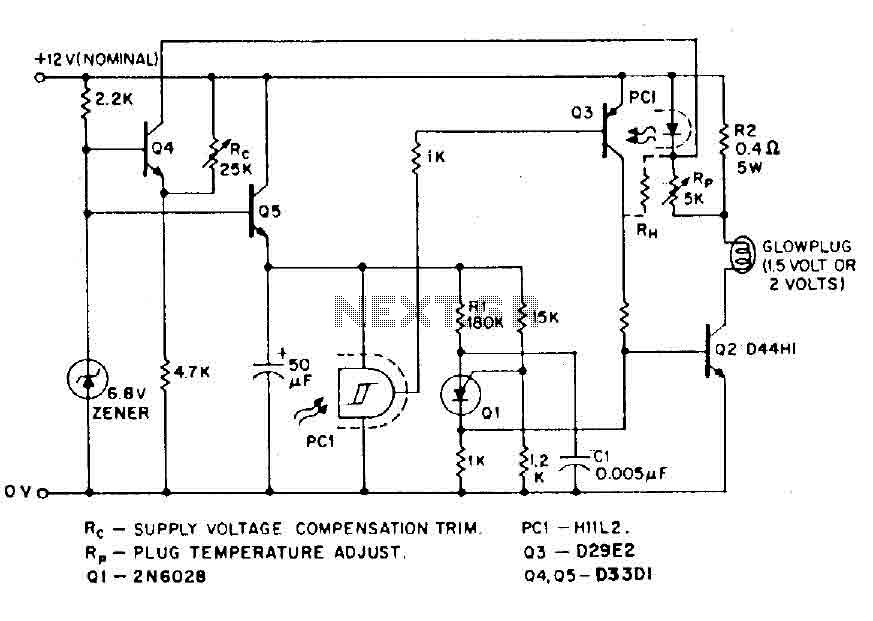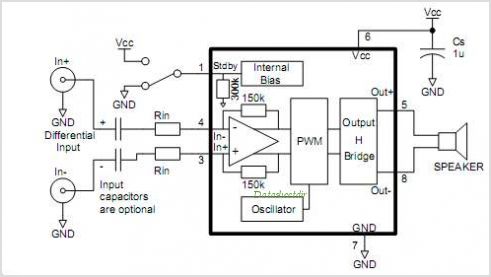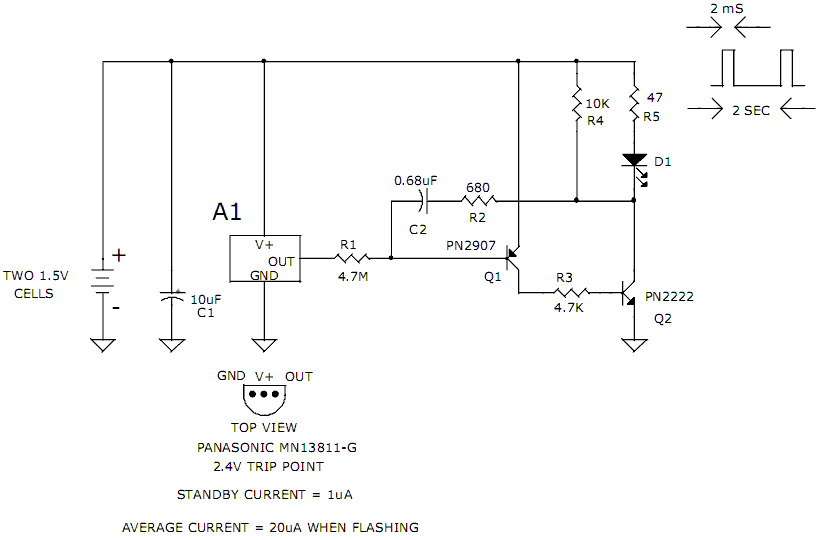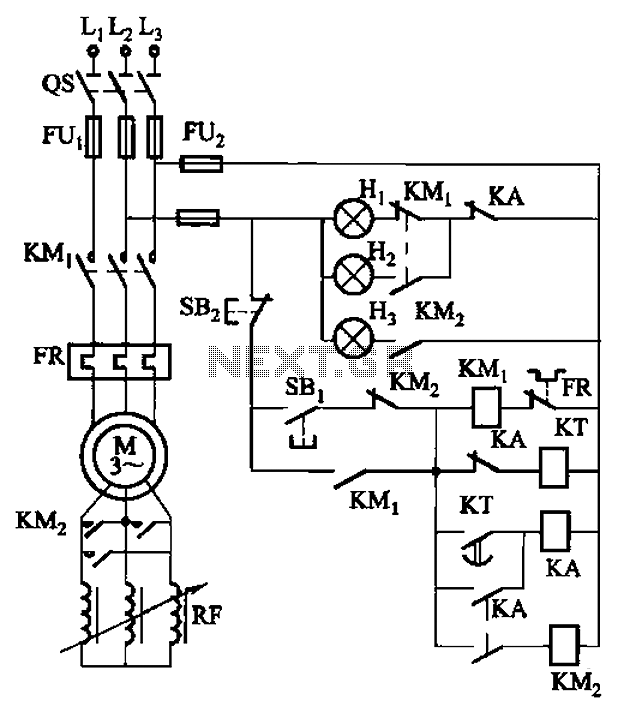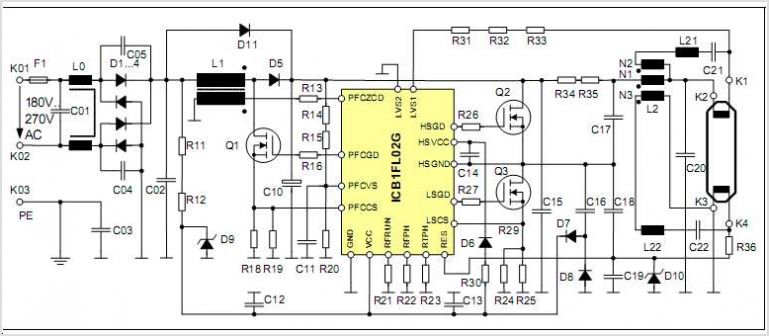
Low frequency lamp flasher-relay driver
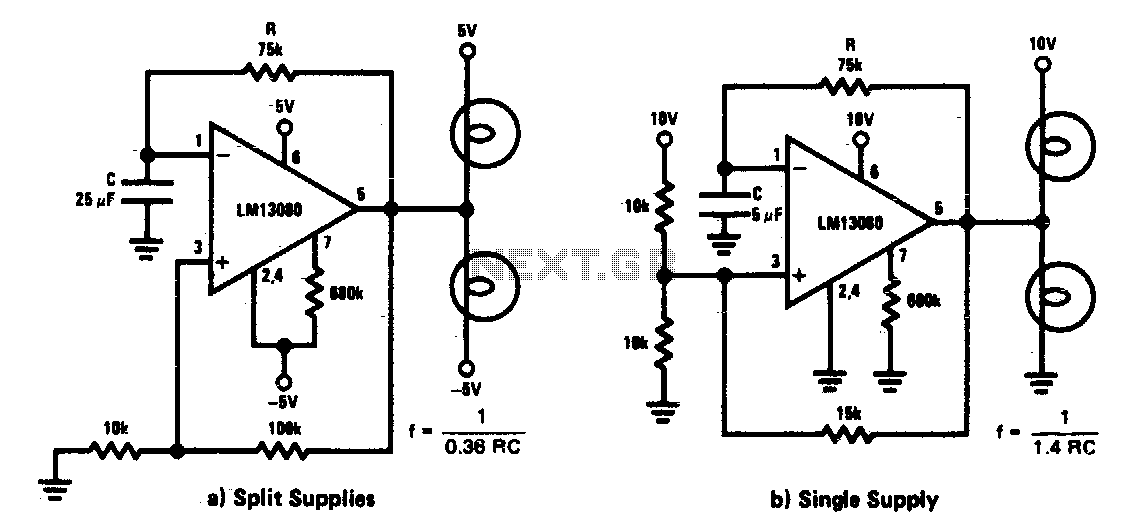
This circuit functions as a low-frequency warning device. The output from the oscillator generates a square wave signal, which is utilized to operate lamps or small relays. The circuit alternately flashes two incandescent lamps.
The low-frequency warning device circuit typically consists of an oscillator, which can be implemented using a 555 timer IC configured in astable mode. The frequency of oscillation can be adjusted by selecting appropriate resistor and capacitor values connected to the timer. The square wave output from the 555 timer is then used to control the operation of two incandescent lamps.
In the circuit, the output pin of the timer is connected to the base of a transistor, which acts as a switch to drive the lamps. When the square wave output goes high, the transistor is turned on, allowing current to flow through the first lamp, illuminating it. As the output transitions to low, the transistor turns off, and the first lamp goes out. Simultaneously, a second transistor can be used to control the second lamp, ensuring that it turns on when the first lamp is off, creating an alternating flashing effect.
To enhance the circuit's performance, diodes may be employed to prevent back EMF from the inductive load (if relays are used) from affecting the oscillator. Additionally, capacitors can be added for stability, and resistors can be employed for current limiting to protect the lamps and transistors from excessive current.
The design of this circuit is straightforward, making it suitable for applications such as warning signals in various environments, where visual alerts are necessary. The alternating flash of the lamps serves to attract attention effectively, making it an efficient warning device.This circuit is a low frequency warning device. The output of the oscillator is a square wave that is used to drive lamps or small relays The circuit alternately flashes two incandescent lamps.
The low-frequency warning device circuit typically consists of an oscillator, which can be implemented using a 555 timer IC configured in astable mode. The frequency of oscillation can be adjusted by selecting appropriate resistor and capacitor values connected to the timer. The square wave output from the 555 timer is then used to control the operation of two incandescent lamps.
In the circuit, the output pin of the timer is connected to the base of a transistor, which acts as a switch to drive the lamps. When the square wave output goes high, the transistor is turned on, allowing current to flow through the first lamp, illuminating it. As the output transitions to low, the transistor turns off, and the first lamp goes out. Simultaneously, a second transistor can be used to control the second lamp, ensuring that it turns on when the first lamp is off, creating an alternating flashing effect.
To enhance the circuit's performance, diodes may be employed to prevent back EMF from the inductive load (if relays are used) from affecting the oscillator. Additionally, capacitors can be added for stability, and resistors can be employed for current limiting to protect the lamps and transistors from excessive current.
The design of this circuit is straightforward, making it suitable for applications such as warning signals in various environments, where visual alerts are necessary. The alternating flash of the lamps serves to attract attention effectively, making it an efficient warning device.This circuit is a low frequency warning device. The output of the oscillator is a square wave that is used to drive lamps or small relays The circuit alternately flashes two incandescent lamps.

